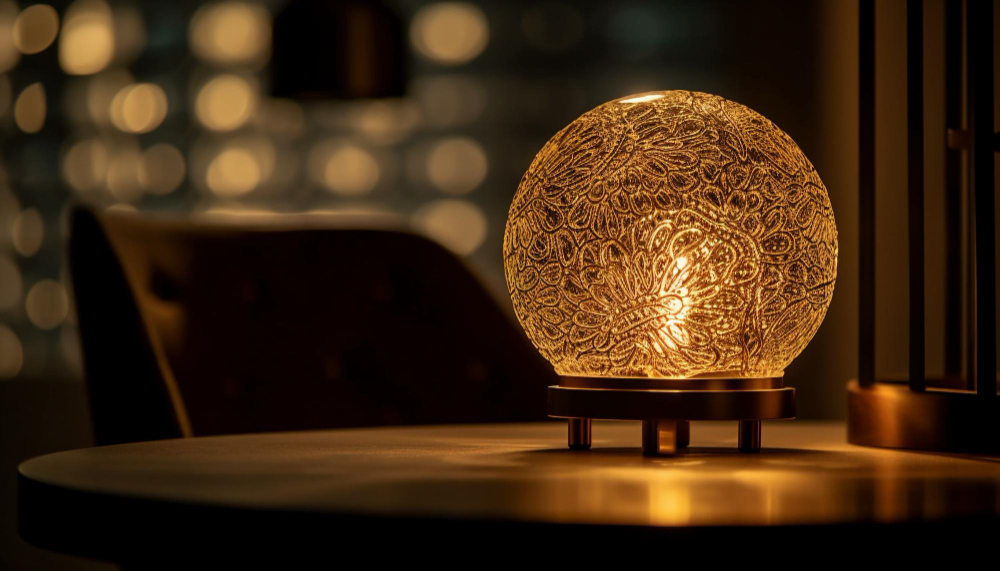Lighting design is a crucial yet often overlooked aspect of our built environment. It shapes our perception of spaces, influences our mood, and even affects our productivity. The interplay of light and shadow is an art form that combines aesthetics, functionality, and technology to create environments that are not just well-lit, but truly engaging.
THE SIGNIFICANCE OF LIGHTING DESIGN
Lighting design extends far beyond mere illumination; it plays a pivotal role in defining the ambiance, functionality, and overall experience of a space. Here are some of the key reasons why lighting design is essential:
- Aesthetic Enhancement: Proper lighting can transform a dull and uninspiring space into a visually appealing one. It highlights architectural features, artworks, and furnishings, contributing to the overall aesthetics.
- Mood and Atmosphere: Lighting has the power to set the mood of a space. Warm, soft lighting can create a cozy and inviting ambiance, while bright, cool lighting can make a space feel energetic and vibrant.
- Productivity and Functionality: In work environments, lighting design can significantly impact productivity. Proper task lighting, for example, can reduce eye strain and enhance concentration.
- Energy Efficiency: Sustainable lighting design is not just about aesthetics but also about energy conservation. Energy-efficient fixtures and smart lighting control systems can significantly reduce electricity consumption.
KEY PRINCIPLES OF LIGHTING DESIGN
Layered Lighting: Effective lighting design often incorporates multiple layers of lighting. These layers typically include ambient lighting (general illumination), task lighting (focused on specific activities), and accent lighting (used to highlight features or objects). The combination of these layers creates a balanced and harmonious lighting scheme.
Color Temperature: Light has different color temperatures, measured in Kelvin (K). Warm light with lower Kelvin values (e.g., 2700K) creates a cozy, intimate atmosphere, while cooler light with higher Kelvin values (e.g., 5000K) feels more energetic and alert. The choice of color temperature depends on the purpose and mood of the space.
Light Distribution: The distribution of light plays a critical role in ensuring that a space is evenly illuminated. Depending on the design objectives, lighting can be diffuse, directional, or a combination of both. Properly distributed light avoids glare and shadows, providing a comfortable environment.
Control and Dimming: Lighting control systems allow for flexibility and adaptability. Dimmers, timers, and sensors can help adjust the intensity and color of light as needed, contributing to energy efficiency and user comfort.
Fixture Selection: The selection of fixtures is crucial to the success of a lighting design project. Fixtures come in various forms, including chandeliers, pendants, sconces, track lights, and recessed lighting. The choice of fixtures should align with the design concept and the intended use of the space.
Natural Light Integration: Natural light, when available, should be integrated into the design. It not only reduces energy consumption but also provides a dynamic and ever-changing element to the space. Techniques like daylight harvesting can be employed to maximize the use of natural light.
LIGHTING DESIGN IN DIFFERENT CONTEXTS
Residential Spaces: In homes, lighting design focuses on creating comfortable and inviting environments. The living room may have warm, ambient lighting for relaxation, while the kitchen and study areas require task lighting for specific activities. Bedrooms often use a combination of ambient and warm accent lighting for a cozy atmosphere.
Commercial Spaces: Commercial lighting design takes into account functionality, brand identity, and energy efficiency. Retail spaces use lighting to draw attention to merchandise, while offices require even illumination to enhance productivity. In restaurants and hotels, lighting sets the mood for dining and relaxation.
Architectural and Exterior Lighting: Architectural lighting accentuates the design of buildings, bridges, and monuments. It highlights the form and structure of these structures, creating dramatic nighttime visuals. Exterior lighting also enhances safety and wayfinding in public spaces and landscapes.
Entertainment and Events: Lighting is a crucial element in the entertainment and event industry. Concerts, theaters, and art installations use dynamic lighting to create immersive experiences. Theatrical lighting designers employ a variety of techniques to evoke emotions and enhance storytelling.
Healthcare and Wellness: In healthcare settings, lighting design is crucial for patient well-being. Tunable lighting systems can mimic natural light patterns to regulate circadian rhythms. Soft lighting is often used in wellness and spa environments to promote relaxation.
Lighting design is a multifaceted discipline that combines artistic creativity, technical knowledge, and an understanding of human psychology. It is a transformative element that has the power to elevate spaces and experiences in a myriad of ways.
As we continue to prioritize sustainability and energy efficiency, the role of lighting design becomes even more significant. The advent of LED technology, smart lighting control systems, and sustainable design practices is reshaping the field, allowing designers to create efficient and dynamic lighting solutions.
Whether in our homes, offices, public spaces, or entertainment venues, the art and science of lighting design will continue to shape the way we perceive and interact with the built environment. It’s a testament to the powerful impact that light can have on our lives, and it underscores the importance of the skilled professionals who craft these illuminating experiences.
For more blogs related to design: https://www.dotsod.in/blog/
Follow DOT School of Design on Facebook, Instagram, LinkedIn, Medium and YouTube



